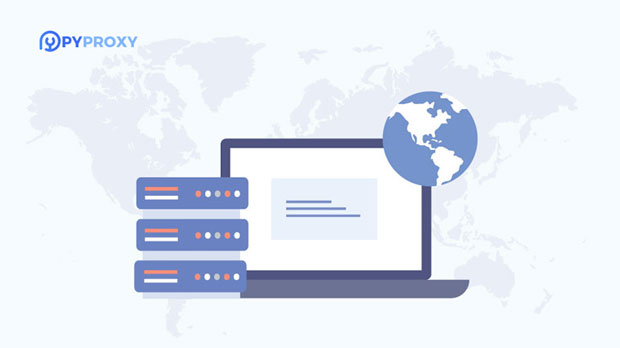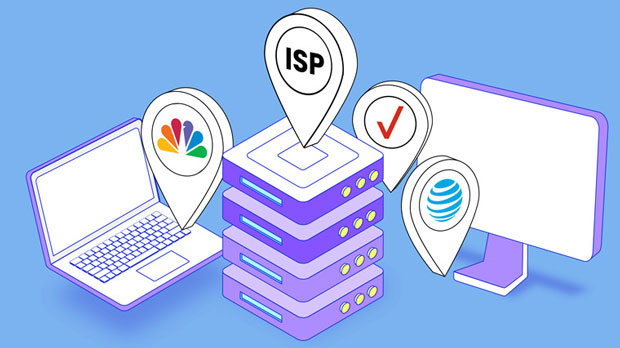Proxy Residential Socks5 and VPN Difference and Application Scenario Analysis
In today’s digital world, privacy, security, and unrestricted internet access have become crucial concerns for users. Two widely used technologies to address these concerns are residential proxy SOCKS5 and VPN (Virtual Private Network). While both serve to protect users’ online activities and provide anonymity, they differ significantly in functionality, performance, and application scenarios. Understanding these differences is vital for choosing the right tool based on specific needs. This article will provide a comprehensive comparison between Residential Proxy SOCKS5 and VPNs, analyzing their key differences, use cases, advantages, and drawbacks in detail. Overview of Residential Proxy SOCKS5 and VPNResidential Proxy SOCKS5 and VPN both aim to enhance users' privacy and security online, but they work in different ways. SOCKS5 is a proxy protocol that routes internet traffic through residential IP addresses, while a VPN creates a secure, encrypted tunnel for all internet traffic between the user's device and the VPN server. The core distinction lies in how they handle data routing and encryption.A Residential Proxy SOCKS5 connects through a series of real residential IPs, which can help mask the user's true location. This type of proxy doesn’t encrypt traffic, meaning it is faster but less secure compared to a VPN. On the other hand, a VPN offers strong encryption and secure tunneling, ensuring that all user data is protected while accessing the internet, making it an ideal choice for securing sensitive information and bypassing geographical restrictions.Detailed Comparison of Residential Proxy SOCKS5 and VPNFunctionality and TechnologyResidential Proxy SOCKS5 is designed to forward traffic through proxy servers that use residential IP addresses, mimicking genuine user activity from real households. SOCKS5 itself is a protocol that does not inherently provide encryption or security features but is highly versatile in routing all types of traffic, including HTTP, FTP, and even torrents. This makes it ideal for situations where speed and anonymity are prioritized over encryption.In contrast, a VPN utilizes encryption to ensure that all traffic from the user's device is securely tunneled to a VPN server before it reaches the final destination. The VPN protocol creates a secure and private connection over the public internet. VPNs use various protocols such as OpenVPN, IKEv2, and L2TP/IPsec, which ensure data protection and allow users to access the internet securely, even on public Wi-Fi networks.Privacy and SecurityWhen it comes to privacy and security, the VPN has a clear advantage. Since a VPN encrypts all traffic, it shields users from third-party surveillance, including hackers, government agencies, and internet service providers (ISPs). VPNs ensure complete anonymity by masking the user’s IP address and securing the data stream with encryption protocols.Residential Proxy SOCKS5, however, does not encrypt traffic. Its main focus is to provide an anonymous browsing experience by masking the user’s real IP address. While this can effectively circumvent geo-restrictions or IP-based blocks, it does not offer the same level of data protection as a VPN. Therefore, while socks5 proxies can help maintain some level of anonymity, they are not recommended for securing sensitive information or protecting user privacy from hackers.Performance and SpeedIn terms of performance, Residential Proxy SOCKS5 generally offers faster speeds compared to a VPN. Since it does not perform encryption or decryption tasks, the data packets flow more freely, which results in lower latency and faster browsing speeds. This makes it a better choice for tasks like web scraping, accessing region-locked content, or managing multiple accounts without heavy security requirements.VPNs, on the other hand, might introduce slight speed reductions due to the encryption overhead. While modern VPN technologies are designed to minimize this impact, users will likely notice a slower connection when compared to a socks5 proxy. This is especially true when using servers located far from the user's physical location or when using encryption-heavy VPN protocols.Use Cases and ApplicationsResidential Proxy SOCKS5 Use CasesResidential Proxy SOCKS5 is often used in cases where speed is essential and privacy concerns are less important. Some typical use cases include:1. Web Scraping: Residential Proxy SOCKS5 allows users to collect data from websites without triggering rate-limiting or IP blocking, as the traffic appears to originate from legitimate residential addresses. 2. Bypassing Geo-restrictions: SOCKS5 proxies are effective for accessing content restricted to certain regions, as they make it seem like the user is browsing from a different location.3. Managing Multiple Accounts: Businesses or individuals may use SOCKS5 proxies to manage several online accounts simultaneously, reducing the risk of account bans or CAPTCHAs associated with repeated login attempts from the same IP.VPN Use CasesVPNs, due to their robust encryption, are ideal for use cases that require both security and anonymity. These include:1. Secure Browsing on Public Networks: A VPN ensures that all internet traffic is encrypted, which is crucial when using unsecured networks like public Wi-Fi in cafes or airports.2. Bypassing Geo-restrictions with Added Security: VPNs can also be used to access content that is geo-restricted while providing the added benefit of encrypting user traffic, making it harder for ISPs or third parties to monitor online activity.3. Privacy Protection and Avoiding Surveillance: For users who are concerned about their online privacy, a VPN ensures that no data is leaked or intercepted during internet browsing. This is particularly beneficial in countries with strict censorship laws or for individuals looking to protect themselves from intrusive data collection practices.Cost ConsiderationsIn terms of cost, Residential Proxy SOCKS5 tends to be more affordable than a VPN, especially when considering large-scale operations like web scraping or bulk account management. Since proxies do not offer encryption, the cost is usually lower, making them a good fit for users who require functionality without the need for high security.VPNs generally come at a higher cost because they provide encryption, better security, and more comprehensive features. However, the investment is justified for users who prioritize security, privacy, and access to restricted content over raw speed.ConclusionBoth Residential Proxy SOCKS5 and VPNs serve vital roles in enhancing online privacy and access, but they cater to different needs. Residential Proxy SOCKS5 offers speed and anonymity for specific tasks like web scraping and managing multiple accounts, making it ideal for users who do not require strong security. On the other hand, VPNs are better suited for users who prioritize privacy and security, especially when browsing sensitive data over public networks or bypassing censorship in restrictive regions.Ultimately, the choice between Residential Proxy SOCKS5 and a VPN should be based on the user’s specific needs: whether they value speed and flexibility or prioritize encryption and security. Understanding these tools in-depth can help users make informed decisions to achieve optimal results in their online activities.
2025-01-14

























































